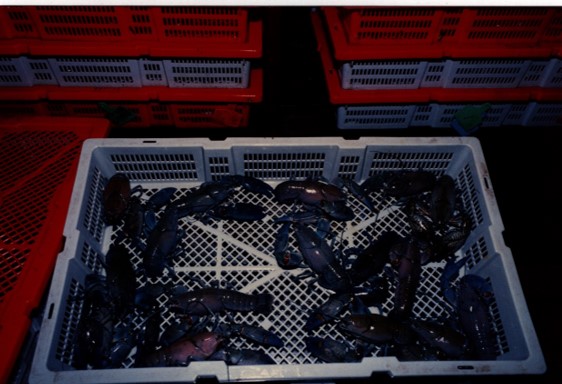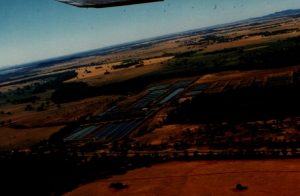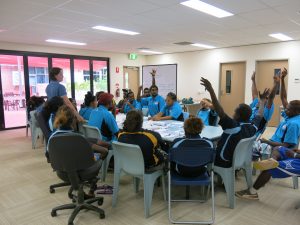This is an overview of some of the journey David Burston has had through life. Not that it is particularly special for the Bunker Space or if your focus is elsewhere. But it is a way of highlighting we all have history, and a range of skills. These are often are not relevant to our immediate needs, and therefore go unnoticed.
In any business, be it having a coworking space or selling dome buildings, you are selling a product or service, and if you are to have long term repeat customers, these people have to, “know, like and trust you.” Ultimately “YOU” are the critical component that makes your business successful.
Creativity is vital if your operation is to stay ahead of this ever changing world. It is not creating something out of nothing, it is always the joining of existing, often unrelated knowledge, to create a new novel outcome. The broader your base of knowledge as a person…. or a community…., your creativity potential grows. This is why having a positive community with a diverse range of skills, from which to draw, is so powerful.
Neoteny
During a Cairns Leadership workshop the concept of neoteny was introduced to David by Glenn Capelli. Neoteny is aging, yet retaining the childlike behaviour traits of spontaneity, creativity and a sense of wonder. What we add as we age, is wisdom and if we keep our mind young then our creativity expands over the years.
Farming
David Burston started off work life in the early 1970’s, farming in North East Victoria for twenty five years. This included mixed sheep, cattle and pasture improvement As with most farmers his skill base became broad including agriculture skills; earthmoving, hay contracting, irrigation design, sheep shearing, butchering and using explosives to save time. Also designing and building high efficiency shearing sheds, engineering and welding, walnut tree grafting, and rebuilding engines. He trained horses and sheep dogs and he was a private pilot with a Cessna 172. Finally his back gave-out forcing him to explore less physical activities.
Peppermint Industry and Vegetables
He had a stint taking the Peppermint Industry from the Myrtleford’s Agriculture Departments test phase to the production phase, in the cool river valleys of North East Victoria. This included upgrading and modifying the shared specialist equipment, and installing a 300hp boiler, with a shell and tube condenser to distil the oil. He also helped run the vegetable growing trials, identifying suitable crops for the tobacco farmers to use as an alternate. With the help of a 44gal drum of grappa he lubricated his way into producing 100,000 broccoli and cauliflower plants. But that is another story.
Aquaculture – Yabbies
 David Burston has over twenty years experience in Aquaculture, initially breeding, growing and marketing Yabbies (fresh water crayfish) with two partners. In three months they were able to lift the price of what was perceived as a muddy crustacean worth $5/kg, to a gourmet local and export product worth over $20/kg.
David Burston has over twenty years experience in Aquaculture, initially breeding, growing and marketing Yabbies (fresh water crayfish) with two partners. In three months they were able to lift the price of what was perceived as a muddy crustacean worth $5/kg, to a gourmet local and export product worth over $20/kg.
This was achieved through designing a drip room system where the yabbies could be held in hibernation for more than six months. The chefs could now put yabbies on the menu, and know that their entire 3 months menu requirements, were waiting patiently for them, and would be identical with each weekly shipment.
He designed and built a fully automated, pneumatically powered, yabby hatchery. It had 1,400 revolving aquariums, producing over one million juveniles a month with less than two labour units. This was over twenty times more efficient than the top research institutions and other commercial farms. The business community crash of the late 80’s, was crippling to their investors, and the business was sold.
Aquaculture – Fish

Looking down on 20 ha of fish ponds at Condobolin
David Burston as a traditional farmer would spend a year to grow a cereal crop, and if he got a bumper wheat crop of 30bags/acre or 6 tons/ha, it produced around 770kg of protein for the year.
If on the other hand he had a hectare pond, that required sunshine and a bucket of organic fertiliser, he could produce a ton of plankton that was 67% protein, or 670kg, in one day. Sure, you have to use the plankton as a food chain base, but the potential was mind blowing for a farmer.
He was consulting to the 50 pond freshwater fish breeding farm, Condo Fisheries at Condobolin, and became a business partner. His role was administration, marketing, increasing production and the health of the fish.
At the dawn of the internet expansion in the early 90’s an email at a remote inland terminal could take five minutes to download. To get the latest fisheries information was a six hour trip to Sydney, visit the Fish Reference Library, scanning hundreds of publications, then photocopying the interesting ones for closer study back at the farm.
One article was on Malaria in Africa, and it mentioned that malaria is synchronised to the Luna cycles. When the moon is full it comes over the horizon about an hour after sunset. Plankton is light sensitive, so it migrates to the surface looking for light, and when the full moon rises and lights the surface of the water, the mosquito larvae (wrigglers) swim up, with full vision of the condensed larvae in the moon light, and have a huge last feed. This ensures the highest survival of the newly hatched mosquitoes, and the highest incident of Malaria during these times as a result.
This principle was applied to the Silver Perch fish breeding, who could benefit from this condensed life accelerating first feed. The fingerling ponds needed to meet the farms needs, were reduced from fifteen, to using just three Luna synchronised ponds. These each produced a bumper crop and gave the farm more fingerlings than it had ever produced in the past. This is typical example of creativity arising from the joining of previously unlinked knowledge.
The winters were too cold at Condobolin for fish growth. An expanded operation was not viable to grow out large quantities of Silver Perch. David headed north for the team who had taken options on 7,500ha of land north of Townsville. This block contained two disused prawn farms. It also had wall to wall grass trees, with high demand from Sydney nurseries. Their potential sale had the capacity to fund the majority of the venture. A great idea, but the Great Barrier Reef Marine Park Authority or GBRMPA, made it impossible to operate in drought years when the river mouths silted over.
David Burston – Aquaculture in the Pacific

In his aquaculture consulting capacity David headed off to the Marshall Islands to Rongelap Atoll. This is the Atoll next to the atomic blasted Bikini Atoll. Rongelap was just coming out of nuclear contamination period, and they were searching for a sustainable industry. They wanted an environmentally compatible industry, so as the original population and their offspring could move back to their historic homeland.
After much research, yellowfin Tuna fattening was selected. There was a depth of Australian expertise from the Bluefin Tuna Industry. The planned project ended up as a US$150 million dollar project with humanitarian funding negotiated. The project strategy was developed over six years with the support of a dozen scientists and fisheries operators.
The plan was for eighteen floating fish farms to be sequentially developed. They were to be located across the Pacific; Milne Bay, Solomon Islands, Fiji and the Marshall Islands, over five years. The infrastructure was based on locally made floating concrete pontoons, and large polar circle sea cages, to hold the fish. Once skills had been developed then other higher priced species were to be considered for breeding and growing-out, using environmentally sensitive systems.
The joint production farms were to own the transport, processing and common desk selling network in USA, Asia and Europe. This was to ensure the profits flowed back to the place of production. They then became the funders of the next farm in the sequence. In effect turning normal aid receivers, into profitable businesses and aid providers. It was a massive project taking an eight hundred page spreadsheet, to analyse the effect of market and input movements. But the GFC came along and that was the end of the humanitarian funding.
Cairns – Environmental Rehabilitation Quality Assurance and Motor Homes
When the Townsville aquaculture project crashed David realised it was time to get a paying job. He open the paper and said “There is a job in here for me!” The job available was furniture removing, including three housefuls of heavy rainforest furniture, the last truckload which had to be carried up a spiral staircase. He got a whole new respect for furniture removers. Plus a raging case of crutch rash, from the hot humid conditions.
Not to be put-off, he repeated the procedure the next weekend. This time he found a truck driving job for an environmental repair revegetation company. He scored an interview. At the end of the interview the owner said “Would you like to manage the Cairns or the Townsville operation?” The quickest promotion David had every received, and he moved to Cairns.
He worked in the environmental industry for 18 months. But there were family tensions in the company, and he decide to go back into business for himself again. This time he had a chance meeting with a Quality Assurance business owner from the UK. He wanted to open a branch in Cairns to service the shipping industry. David became a qualified ISO auditor as a part time business. This developed to specialising in the Motorhome Industry, developing Quality Management Plans for two Cairns manufacturers and a Melbourne company.
Cairns – Web Studio, Telemarketing and Fabric Structures

David Burston teamed up with a partner and they opened a website studio. Then developed a telemarketing centre first in Yorkeys Knob then at The Pier in Cairns. Fabric structures had been researched before going to the Marshall Islands. While David was there he sold two structures to the local contractor. On return he tried to sell a website to the manufacturer. Luckily they we not into technology, and was given permission to create website to market the Allshelter fabric structures.
The Fabric Structure business grew at around 60% a year. But the partnership ended and the other businesses were dissolved in 2011. David restarted a second fabric structure business Taurus Fabric Build and ran it until 2016 when he took a break, literally, after an argument with gravity. By this stage he had sold over one thousand fabric structures. He had also installed over one hundred across the southern hemisphere.
He was putting up a structure for a friend, ten hours drive up Cape York near Aurukun. It was on a very remote cattle station, two days before Christmas 2017 He was installing the last brace into the frame, and he had a mini dehydration blackout, falling 5.2 metres. A 64 year old who thought he was 35 and bullet proof, and totally inadequate farm equipment.
It took fifteen weeks in hospital to repair a split pelvis, shattered elbow and all the muscles torn from his right shoulder. Plus a follow-up surgery was needed when the steel across the front of the pelvis broke, and the screw in the back started un-winding. It took a total of four years before he was back operating again on all cylinders, well most of them.
The other options were a coffin, or a wheel chair. He was more than happy with the outcome, which was a valuable learning exercise in listening to your body. He found while his body was recovering his brain was fuzzy. Quoting jobs that had taken several hours were turned into a two day disjoined, poorly presented, marathons. His body recovered outwardly in about six months after the second surgery. But it took three years to get back to a healthy mental state and his former productivity. After this experience he does not want our entrepreneurs to go down the same track. Mental breakdowns from over work and stress take years to recover from.
Cairns – Communication Training with David Burston

Communication skills training to Gulf communities emerging leaders.
David Burston joined Toastmasters in 2008 and built a history in delivering communication workshops through northern Australia and Papua New Guinea. Over the years he has trained or coached over one thousand participants, in building their communication skills with his business Confidence Unlimited. In 2014 TEDxJCU was formed at James Cook University and he has mentored and coached the seventy speakers which now have over one million views.
As Pitch Master at the local innovation centre, theSPACE, he prepared the entrepreneurs and business owners for their various accelerator and finance pitches. In the 2016 Inaugural Australia Post Queensland Regional pitch competitions, three of the five finalists came from theSPACE team in Cairns.
David Burston takes on The Bunker Coworking Space
David’s 2011 Taurus Fabric Build eighty page website template was no longer being updated, but it was pulling in quotes from around the world, for the large fabric structures. He had to wind back the WordPress version so the components still operated, and he refreshed the SEO. But it was a dead man walking in urgent need of a rebuild.
This together with the relationships he had built with his old clients, who were still contacting him after more than three year of absence, he decided that the fabric structure business needed to be revived. He had enjoyed his time at theSPACE and being around positive and creative go-getters, and so The Bunker coworking Space was born, to house his business and other evolving Cairns businesses.
The focus of the Bunker Space is to provide a facility and community to people just starting their businesses or growing their business. Getting around people who have similar aims in life to their own, can have a huge impact on success rates and the speed of development in businesses.
In the words of motivational speaker Jim Rohn: “You are the average of the five people you spend the most time with.”
This is especially true with entrepreneurs. A community of entrepreneurs will advance many times faster, than by having then working in isolation. And this is why David did what he did, both for his own business health and to help others with theirs. 🙂
David is now working full time for Allshelter as an Account Manager, nurturing their client relationships across Australia and PNG. He is enjoying the support and depth in a larger corporate entity, which he has known from their very early days in creating and developing their business, that started in 1999.
To have a full time job, where in your office you are surrounded by motivated, positive, creative people, doing interesting things, while they are challenging themselves in life, sounds too good to be true.
